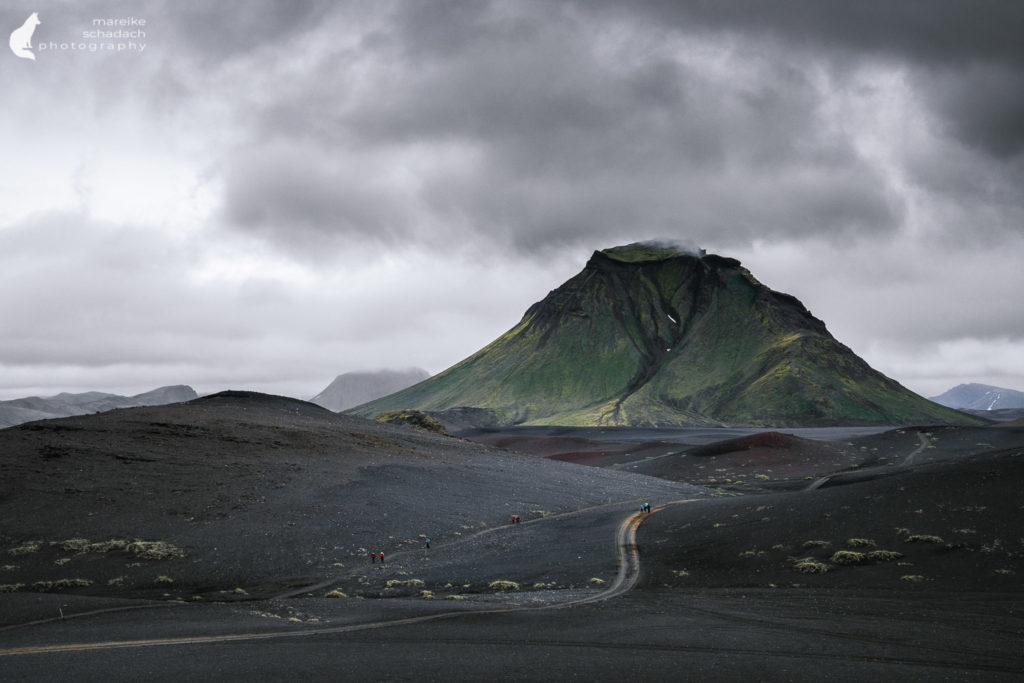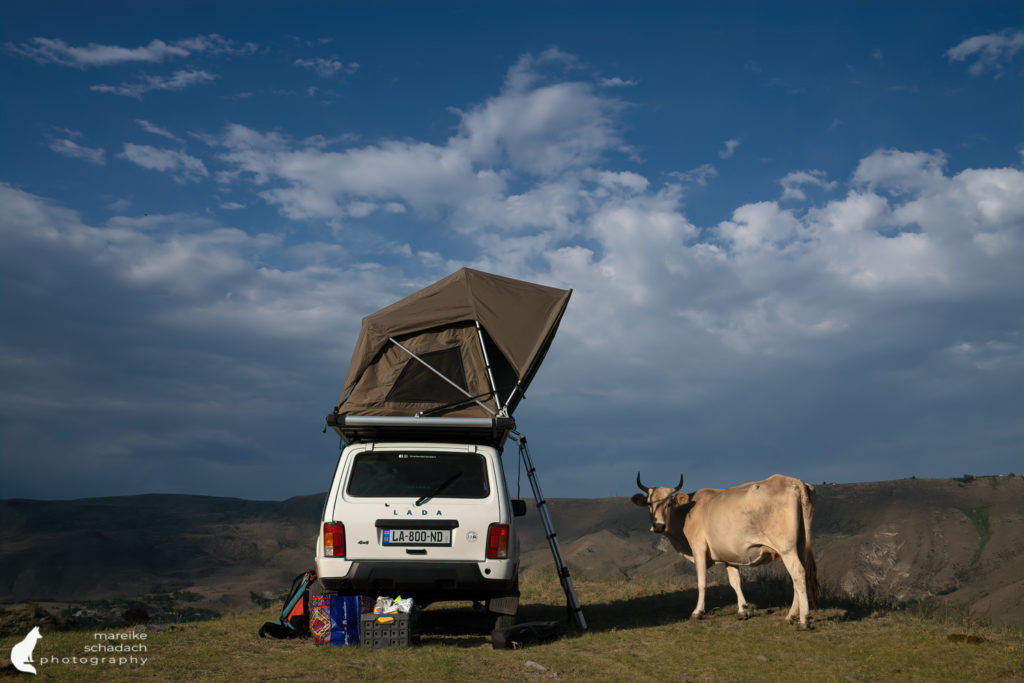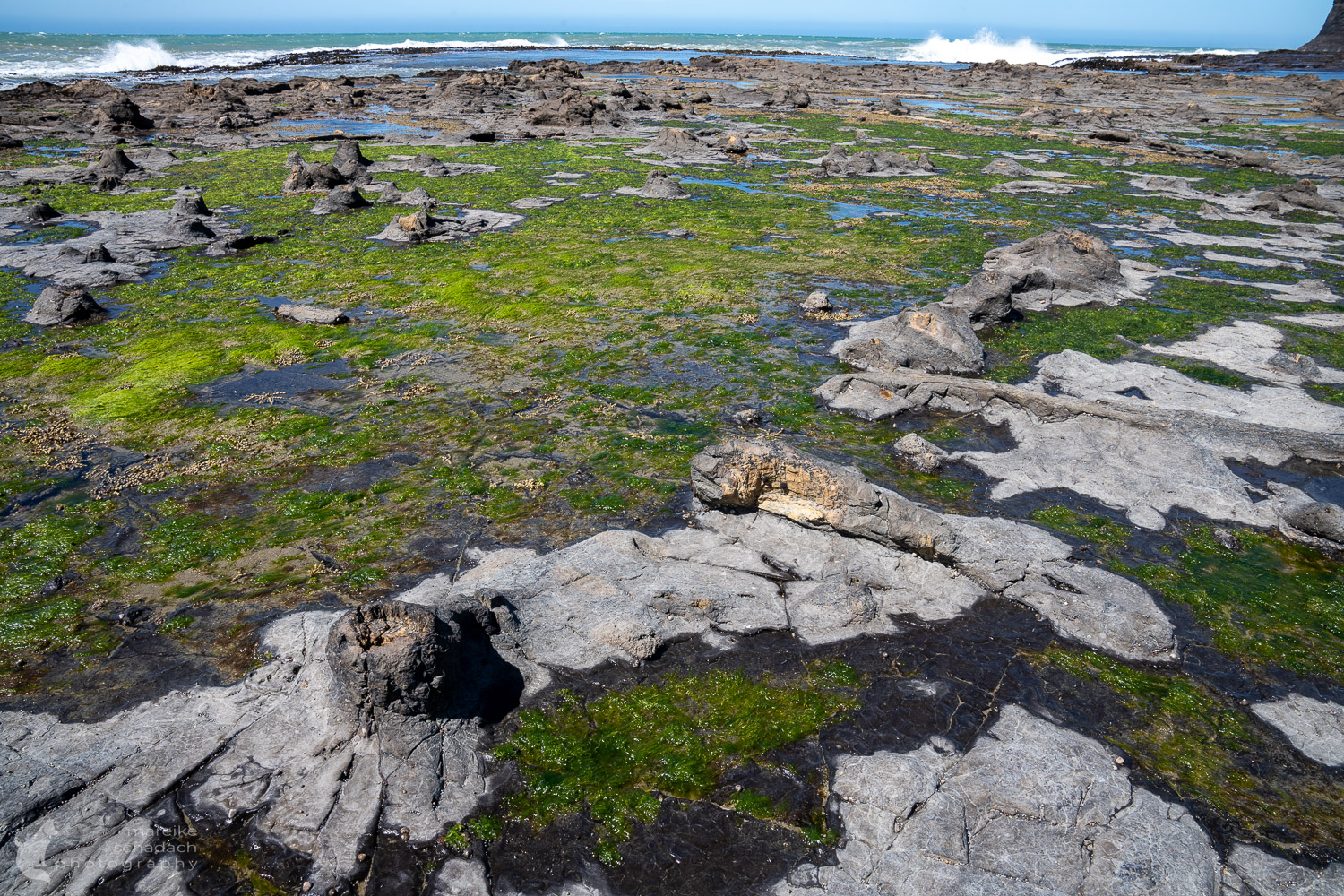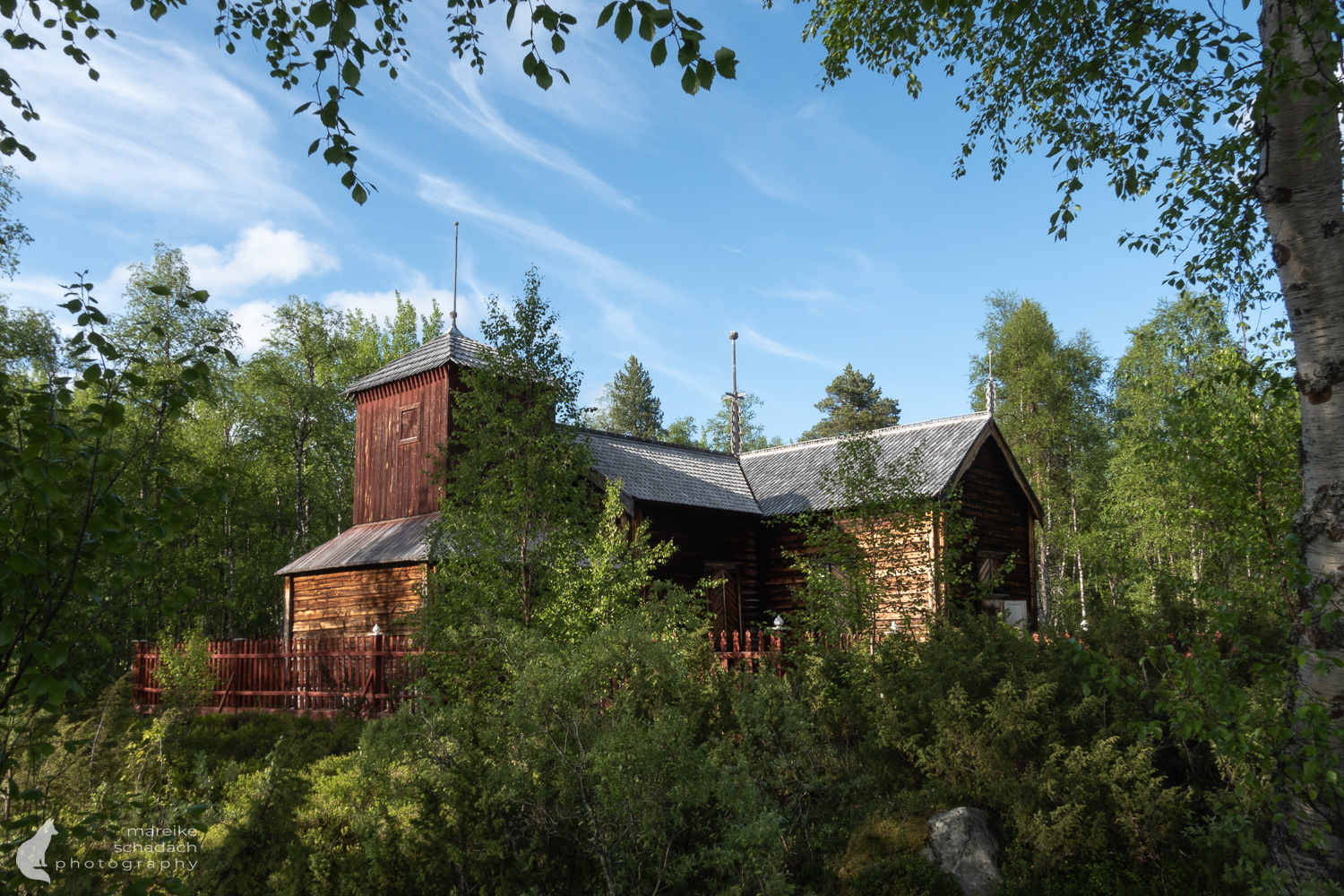Jeder kennt es, jeder kann es und jeder macht es in der Regel einmal am Tag. Es ist also etwas ganz natürliches. Doch in der Natur, fällt es uns plötzlich schwer. Es fängt mit der Suche nach einem stillen Örtchen an, geht mit einer unbequemen Hockstellung und gar fehlendem Klopapier weiter und endet meist mit einer deutlich erkennbaren Hinterlassenschaft in der Natur. Shit happens! Damit ihr das nächste Mal in der Natur euer großes Geschäft wie ein Profi abwickeln könnt, hab ich euch einen kleinen Guide geschrieben. Viel Spaß beim Lesen und nachmachen!
Unassigned, unpaid advertising. The article contains affiliate links.
Main Goals when doing the "Big Business" in Nature
Your big business should remain hidden and it should secretly provide the desired relief. Other hikers should not notice anything; they should not see or smell any of it; nor should they step into it or get sick from it. Nature itself, i.e. the forest, the meadow, or the lake, should also not be affected. Because, unlike the hiker, who quickly disappears from the minefield, nature has to live with your piles. Usually one month. In cold areas longer. In ice forever. See also the rotting table from the Austrian Alpine Club.
Fair play to nature! Here's how it works:
Everything centers around four main points:
- Minimize pollution of water bodies by additional nutrient input.
- Maximize decomposition rate
- Minimize social disturbance
- Minimize insect or wildlife contact.
By following these four points, you will help nature and avoid disease transmission.
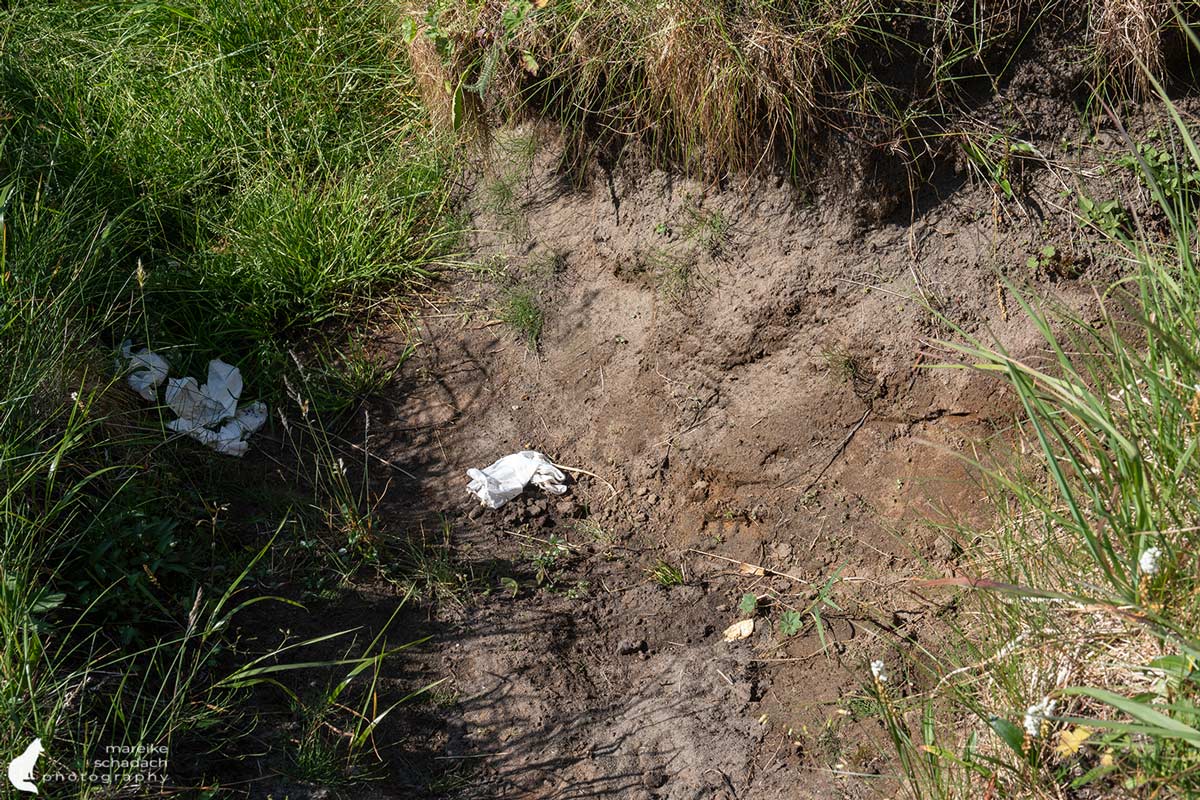
How do you shit in Nature without shitting on Nature?
There are basically two strategies to avoid shitting on nature:
Variant 1: Bury your poop in a 15 to 20 cm deep hole, called a cat hole.
Variant 2: Pack it up, take it with you, and dispose of it after the tour.
I'll get to the details in a minute...
Find out if there are regulations for handling feces in the area where you are touring. In some high altitude, (sub)arctic, sensitive, or heavily used areas it is advisable or even required that you pack your shit and take it back with you.
A Calculation Example
On a summer day, there are 20 tents in Kvalvika Bay, a beautiful bay in Lofotodden National Park, Lofoten. With one or two people per tent, that's about 30 overnight guests and up to 30 piles per day. Let's assume optimistically that the toilet paper is collected in the garbage bag and the number of overnight guests is only half as high at the beginning and end of the season (June and August) as in July. Then there are still about 1,845 (half-decomposed) piles at the end of the Friluftsliv season. If each pile weighs about 400 grams, that's almost a ton of droppings at the end of the season. That's about the weight that two to three Icelandic horses weigh. Nature has to cope with that first. In the cold north, it's not so easy; the decomposition time is much longer than in Central Europe. The remains will probably not disappear completely into the sea until the snow melts next spring.

By the way: due to the many toilets in the bay, the water from the streams is no longer drinkable without prior treatment. Signs warn visitors accordingly about germs.
Cat Hole - Bury your Poop in the Cat Hole
The strategy behind the cat hole is simple: give nature a chance to clean itself by placing your business thoughtfully. Cover your pile afterwards to minimize any negative impact. Cats know and do this instinctively.
How good is your instinct? Take the Quiz: What is the best place for a cat hole?
The answer at the end of the article.

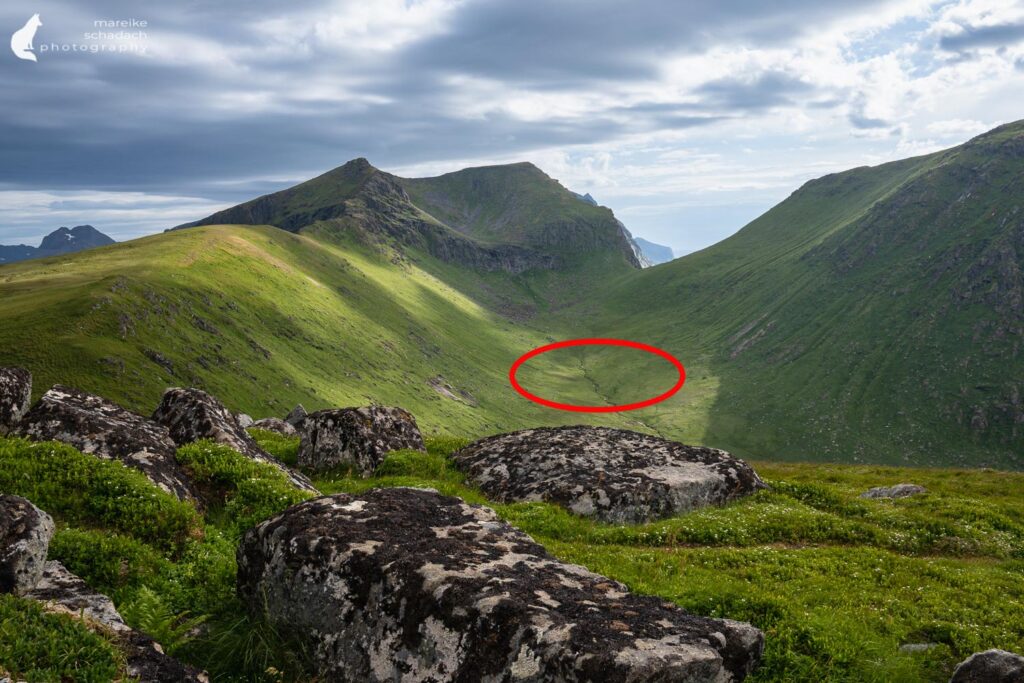


Step by Step to Number Two with the Cat Hole
- Find a suitable place:
- Be 60 yards (about 70 steps) away from bodies of water and not in a drainage channel where the water flows when it rains or the snow melts. If you are above a body of water, then pay special attention to sufficient distance here. Otherwise, the next rain will carry the dissolved feces directly into the water.
- Not within sight of trails or camps.
- No ground saturated with water
- Preferably a sunny, warm spot because that's where decomposition rates are best
- Dig a hole 15 to 20 cm deep
- Use a small shovel, branch, or other improvised object for this purpose.
- Trying to dig a hole with a trekking boot usually just compacts the soil, which is counterproductive.
- Lifting out the top layer is best done in one piece, especially in grassy soil.
- Increase the rate of decomposition by mixing your business and some soil with a stick.
- Fill in your hole, trying to restore the soil surface exactly as it was before. What's not so good and why: putting a large rock directly on top of the pile. This will reduce the risk of someone stepping in it, but it will slow down decomposition by reducing the area of attack and ventilation.
- Put your toilet paper in a garbage bag. Other hygiene products such as wet wipes, tampons, and sanitary towels should also be put in there.
Shit to go! Pack and go
The gap in the market has long been recognized and retailers offer various types of shit bags.
There are for example the Biffy Bags from America, which I was able to try out on my last hike in Lofoten. Lofotodden National Park has provided the bags free of charge as part of a project for campers in the popular bay of Kvalvika. The bay is visited by many day guests and also by overnight guests in the summer. Toilets are available at each of the parking lots... a good two hours away.
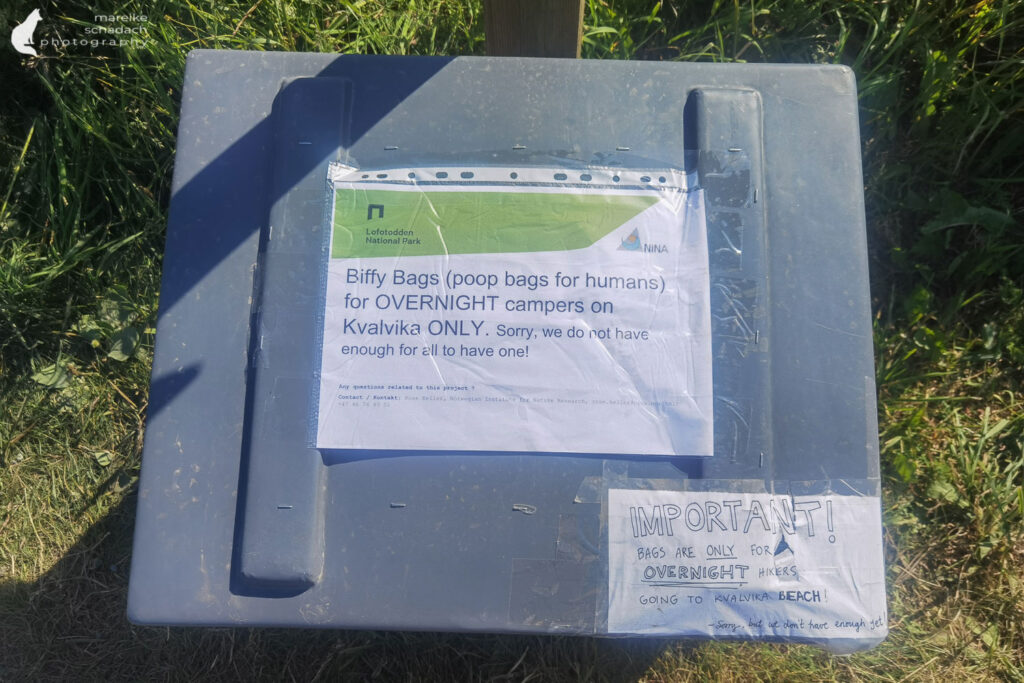
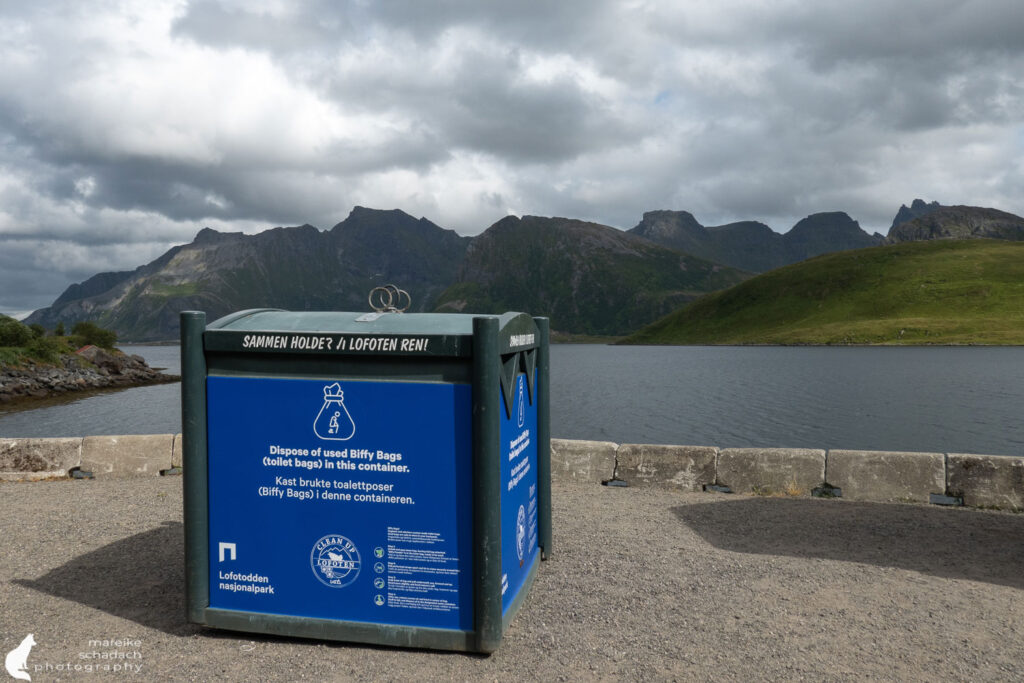
Die Biffy Bags haben innen einen grünen Plastiksack, der als Hilfe zum Eintüten des Haufens gedacht ist. Dieser landet dann in dem silberfarbenen Beutel mit einem Absorptionsmittel. Das grüne Plastik wird dann ebenfalls in den silberfarbenen Beutel gesteckt der dann luft- und geruchsdicht verschlossen wird. Ein bisschen Klopapier und ein Handdesinfektionstuch sind inklusive. Ein Rundum-Sorglos-Paket? Kommt drauf an, aus welcher Perspektive man drauf schaut: erstmal schön für die Natur. Aber es entsteht dadurch natürlich zusätzlicher Müll (das Biffy Bag selbst), der über den Hausmüll zu entsorgen ist. An den Parkplätzen im Nationalpark stehen große, blaue Container für die Entsorgung bereit.
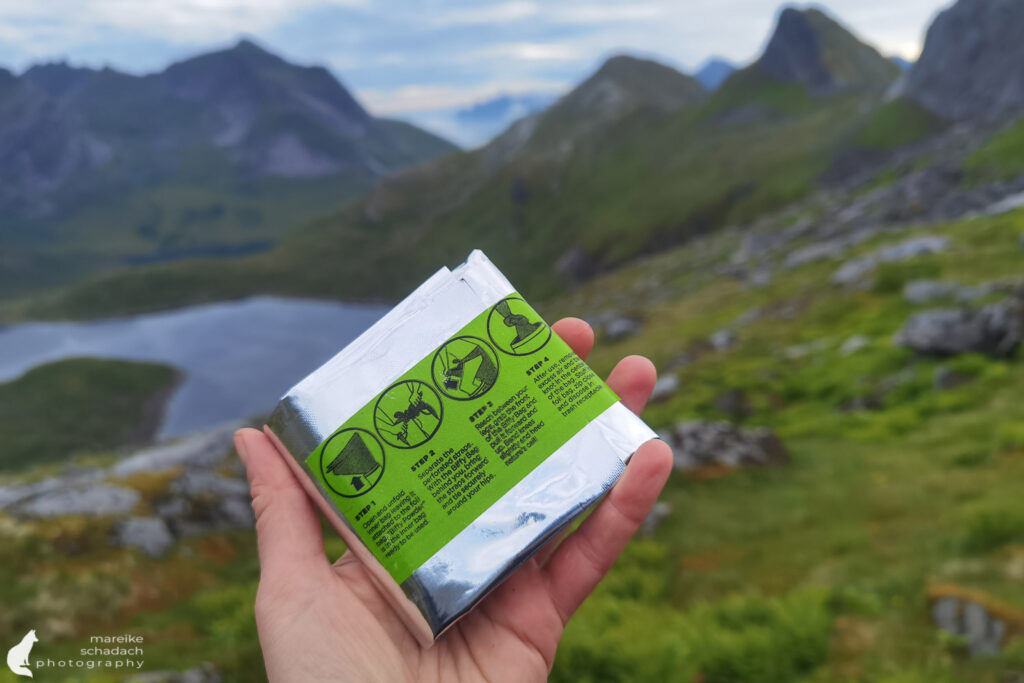


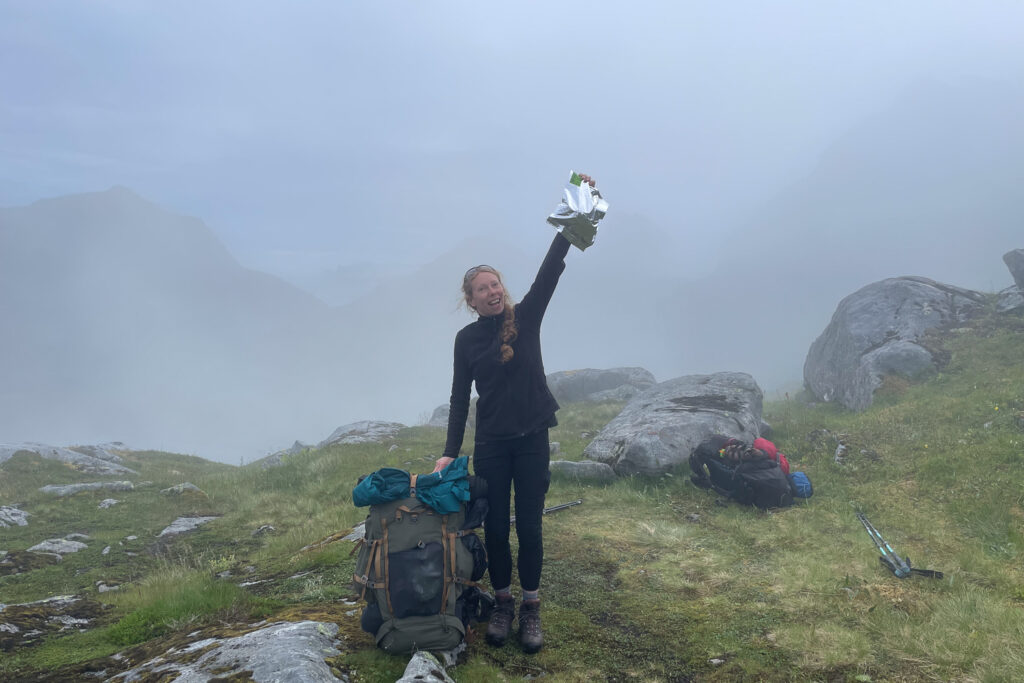
Of course, there are also simpler methods: you can also do your business in a normal garbage bag and then put it in another tightly sealable bag. Climbers have for example the Poop Tubes. There are no limits to your own ingenuity.
A little bit of Biology
Human feces consists of water, undigested food, fats, starches, enzymes, bile products, and parts of our intestinal flora, as well as any pathogens. The bacteria excreted with the feces continue the breakdown process in the Cat Hole. They are supported by fungi and other microorganisms present in the soil. At the end of the decomposition process, nutrients such as nitrogen, phosphorus, and potassium are released. These are essential for plant growth. But if too many of them enter the water body, they can trigger algal blooms and damage the fauna and flora.
The decomposition time of feces depends on several factors, such as the composition of the feces, temperature, moisture content, and the presence of oxygen. Depending on the conditions, it takes anywhere from a few weeks to several months.
Many germs are excreted with the feces. Some of them can make you sick, usually resulting in diarrhea. Typical diseases transmitted through feces and contaminated water are cholera, typhoid, and hepatitis A.
Tips for the "Small Business" in Nature
For those who just want to pee in nature, the following applies:
- Move away from trails and camp or unpleasant odors may develop depending on the weather.
- Do not pee in or too close to small bodies of water such as pools, streams, or ponds. Move away about 60 yards.
- You can, however, pee directly into large rivers or the sea, as the urine is quickly distributed sufficiently in the volume of water.
- Animals can be attracted to the salt in the urine. To get at the salt, they may then dig up sensitive vegetation. It is therefore recommended to pee on rocks, stones or leaves, and needles and not on moss and flowers.
Special Tip for all Ladies
With a special pee funnel, you can pee standing up and leave your pants up in cold or rainy weather. After practicing a few times, you won't miss a thing.
For beginners and advanced: the book* on the subject and the associated tools*.
Solution of the Quiz
The marked spot in picture 3 is best for a cat hole. Why? It is more than 60 yards from the body of water, off the trail, and there is likely to be enough organic material on the ground near the trees in which to dig a hole. In addition, the small trees also give some privacy.
First picture: This place is unsuitable, because it is too close to the water.
Second picture: This place is also only conditionally suitable, because it is obviously in the direct inflow of the brook in the valley. Here it helps to increase the distance to the stream.
Fourth picture: It is easy to dig holes in the sand. But unfortunately, the microorganisms involved in the decomposition are missing here. Moreover, digging would destabilize the slope of the small dune and promote erosion.
Book tips for sustainable Camping
You want to know more about nature-friendly and sustainable camping? Then I have three book recommendations* for you.
If you buy a book or another article via an affiliate link, I get a small commission and you help me to keep filling Wanderweh-Motive with interesting articles. The product will not be more expensive for you.
Do you want to know when there are new articles on my blog? Then follow me on Facebook, Pinterest or Instagram. I would also be very happy if you share my article with your friends.
Recommendations for further Reading
You are still looking for an idea for your next camping trip in nature? Then take a look at my two following articles:







